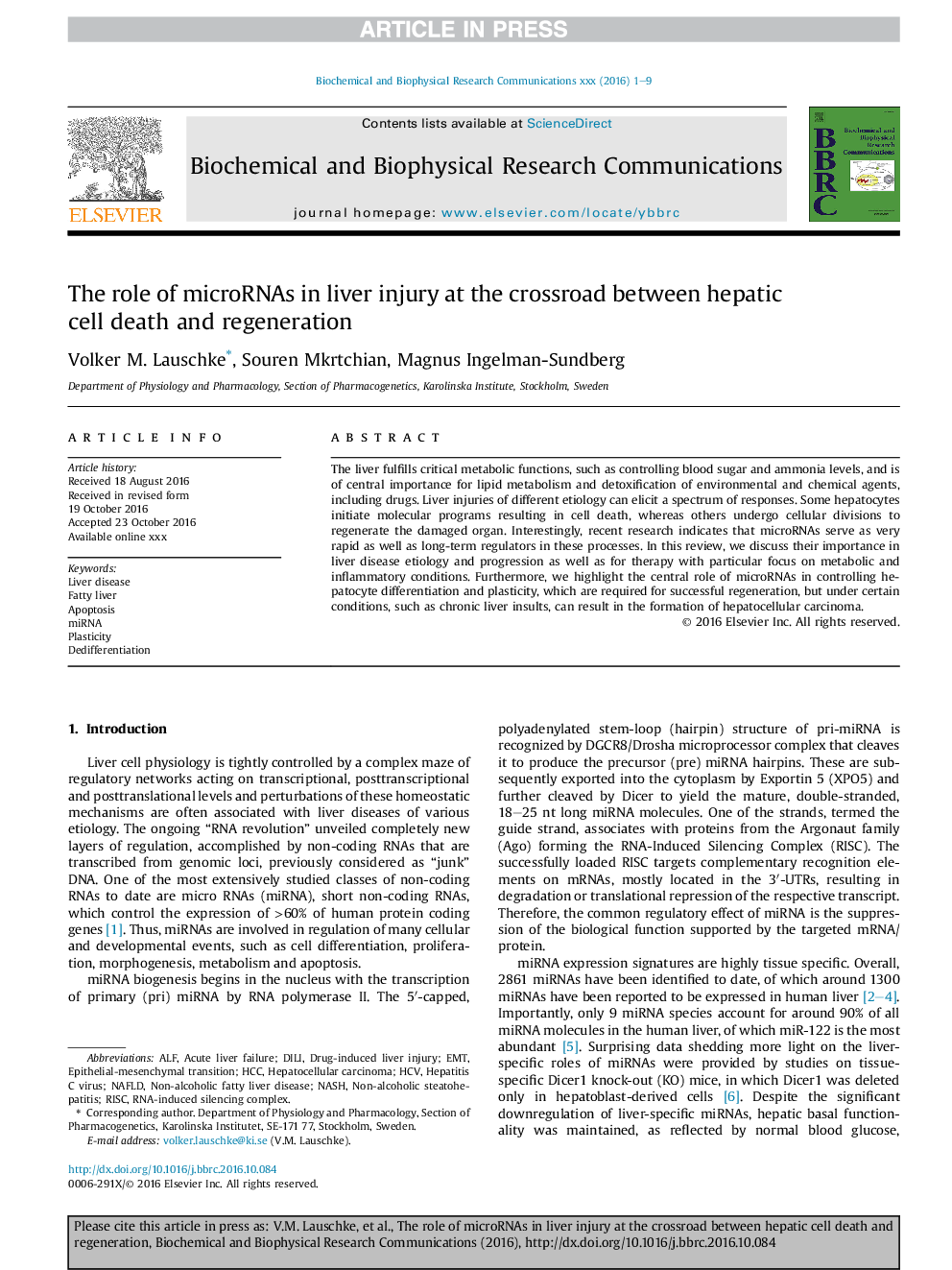| Article ID | Journal | Published Year | Pages | File Type |
|---|---|---|---|---|
| 5506445 | Biochemical and Biophysical Research Communications | 2017 | 9 Pages |
Abstract
The liver fulfills critical metabolic functions, such as controlling blood sugar and ammonia levels, and is of central importance for lipid metabolism and detoxification of environmental and chemical agents, including drugs. Liver injuries of different etiology can elicit a spectrum of responses. Some hepatocytes initiate molecular programs resulting in cell death, whereas others undergo cellular divisions to regenerate the damaged organ. Interestingly, recent research indicates that microRNAs serve as very rapid as well as long-term regulators in these processes. In this review, we discuss their importance in liver disease etiology and progression as well as for therapy with particular focus on metabolic and inflammatory conditions. Furthermore, we highlight the central role of microRNAs in controlling hepatocyte differentiation and plasticity, which are required for successful regeneration, but under certain conditions, such as chronic liver insults, can result in the formation of hepatocellular carcinoma.
Keywords
NAFLDALFHCCDrug-induced liver injuryNon-alcoholic steatohepatitisnon-alcoholic fatty liver diseaseLiver diseaseDedifferentiationEMTApoptosisRISCDILIRNA-Induced Silencing ComplexMiRNAAcute liver failureNash HCVHepatitis C virusPlasticityHepatocellular carcinomaFatty liverEpithelial-mesenchymal transition
Related Topics
Life Sciences
Biochemistry, Genetics and Molecular Biology
Biochemistry
Authors
Volker M. Lauschke, Souren Mkrtchian, Magnus Ingelman-Sundberg,
